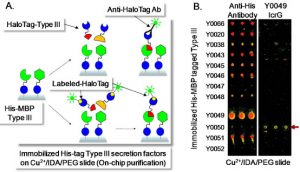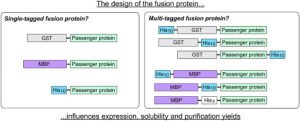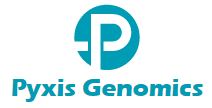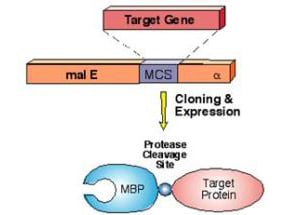Abstract
Recombinant proteins are commonly expressed in eukaryotic expression systems to ensure proper glycosylation and disulfide bond formation. Although many proteins can be easily expressed, some proteins, subdomains, and mutant versions of proteins can cause problems. Here, we investigated the expression levels of recombinant extracellular, intracellular, and transmembrane proteins bound to different polypeptides in mammalian cell lines. Surprisingly, protein fusion with prokaryotic N-terminal 6xHis-MBP-tagged Recombinant generally enhanced protein production.
MBP fusion proteins consistently exhibited the strongest increase in protein production compared to commonly used tags, for example, the Fc tag, glutathione S-transferase (GST), SlyD, and serum albumin (ser alb). Furthermore, MBP-bound proteins revealed a reduced number of dead cells upon transient transfection. Unlike the Fc tag, MBP is a stable monomer and does not promote protein aggregation.
Therefore, the MBP tag does not induce artificial dimerization of the tethered proteins and provides a beneficial fusion tag for cell binding and adhesion studies. Using MBP, we were able to secrete a disease-causing mutant protein laminin β2 (congenital nephrotic syndrome), which is normally retained in the endoplasmic reticulum. In summary, this study establishes MBP as a versatile expression tag for protein production in eukaryotic expression systems.

Materials and methods
- Transfection
HEK293 cells were seeded at 90% confluency in a 24-well plate and allowed to attach overnight. The next day, cells were transfected with different constructs in triplicate using FuGENE® HD (Promega, Mannheim, Germany, catalogue no: E2311). FuGENE® HD was added to DMEM/F-12, GlutaMAX™ (Life Technologies, Darmstadt, Germany, Catalog #: 10565–018) at room temperature for 10 min and then incubated with different plasmid DNA for 20 min. plus. The ratio of transfection reagent to plasmid DNA was 1:3 (0.5 µg plasmid per well).
The different transfection DNA mixes were added directly to the respective wells and incubated for 24 h. The next day, the supernatant was discarded and a fresh serum-free medium was added for an additional 24 h before the supernatant or cells were harvested for Western blot analysis. To detect membrane-bound proteins, cells were lysed using the complete Lysis-B EDTA-free kit according to manufacturing guidelines (Roche, catalogue no: 04719948001).
- Western blot analysis
All constructs used in this study were fused with an N-terminal double Strep II tag. For the detection of the constructs, the Strep-Tactin®-HRP conjugate (IBA, Göttingen, Germany, Cat. no.: 2-1502-001) was used. Samples were run in triplicate on a 10% SDS-PAGE gel and then transferred for 1 hour to a nitrocellulose membrane. The membrane was blocked with 1 x PBS, 0.5% Tween 20 supplemented with 3% BSA for 1 h.
The blocking solution was then discarded and Strep-Tactin®-HRP detection solution (1:100,000 dilution in 1 x PBS, 0.1% Tween 20) was added directly to the membrane for 1 hour. The membrane was then washed twice with 1x PBS, 0.1% Tween-20 and twice with 1x PBS for 1 min before the membrane was developed with ECL™ (GE Healthcare Europe GmbH, Freiburg, Germany, Catalog No.: RPN2232). The intensity of the signals (arbitrary signal) was analyzed using ImageJ.

- Dynamic light scattering
The Nano-S dynamic light scattering system (Malvern Instruments Ltd, Malvern, UK) equipped with a 633 nm laser and a fixed scattering angle (173°) was used to analyze the purity of MBP and MBP delta protein -netrin-4. Traditional DLS analysis provides the translational diffusion coefficient which was converted to Stokes radius or hydrodynamic radius via the Stokes-Einstein relationship using the DTS software (Malvern Instruments Ltd., Malvern, UK) supplied with the instrument.
Both proteins were allowed to equilibrate for 4 min at 20 °C before DLS measurements, after which multiple DLS profile logs were collected for data analysis. The purity of MBP-netrin-4 delta (delta: the C-terminal NTR domain is missing) was studied in the concentration range of 3.28 to 1.7 mg/ml, while MBP alone was studied from 1.80 at 1.0 mg/ml in 1x TBS buffer.
- eGFP detection
50 μl of cell supernatant was transferred to 96 wells (Corning Costar black plates with clear bottom) and then the eGFP emission signal was detected using the Tecan Infinite M1000 reader at 509 nm (arbitrary signal).
- Cell adhesion assay
Wells of a 96-well plate were covered overnight with serial dilutions (0-50 µg/mL) of protein at 4°C. Trypsinized B16-F1 cells were resuspended in serum-free DMEM/F-12 (supplemented with 2 mM MgCl2 and 1 mM MnCl2) and seeded at 5 x 10 4 cells/well in triplicate. Cells were allowed to adhere to the various substrates at 37°C for 30 min.
After carefully washing non-adherent cells once with 1x PBS, adherent cells were fixed with 1% glutaraldehyde in 1x PBS for 15 min at room temperature before staining for 25 min with 0.1% crystal violet in H2O. Adherent cells were quantified by releasing the dye from the cells with 0.2% Triton X-100. The absorbance was measured in a spectrophotometer (Tecan) at 570 nm. A blank value corresponding to the BSA-coated wells was subtracted.
- Homology modelling
A homology modelling approach was used to generate 3D structures of the P. aerophilum MBP protein. The crystal structure coordinates of P. furiosus (PDB ID: 1ELJ) were used as a template for model construction: the P. aerophilum MBP protein has 52% sequence identity and about 78% sequence similarity. with P. furiosus. The SWISS-MODEL web server DeepView tool was used to align the sequences to generate the template for the Modeller model building software,

